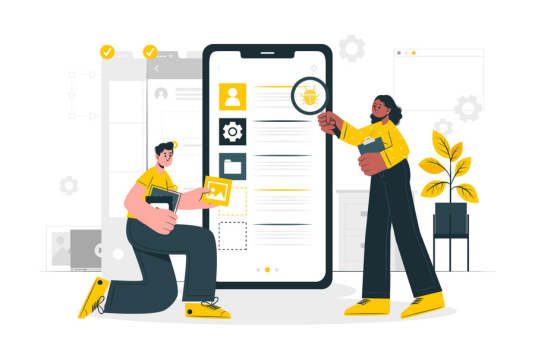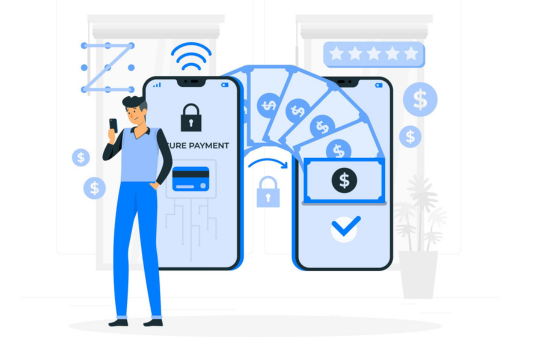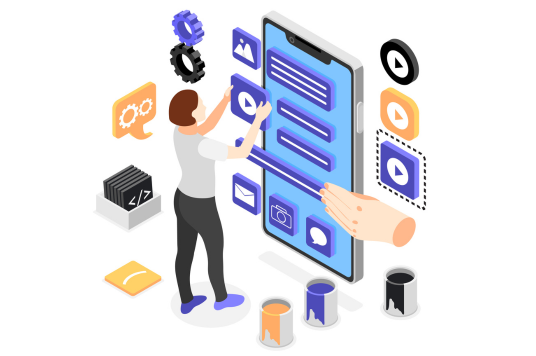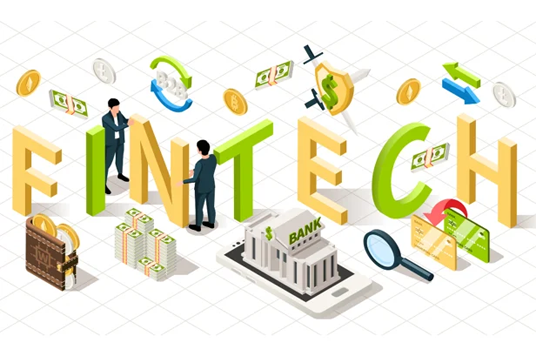Since the invention of the smartphone, the digital revolution has likely penetrated every facet of your daily life, and the financial services sector is no exception. One of the most transformative aspects of this evolution is the rise of mobile apps in banking.
By revolutionizing our engagement with financial institutions, a bank app seamlessly handles everything from straightforward savings accounts and management to intricate, financial institution transactions.
TL;DR
- The user interface (UI) and navigation design stand out as crucial elements for effective mobile banking applications.
- A top-notch mobile banking app should provide a range of services and features to meet the varied financial needs and preferences of its customers.
- Allowing users to tailor settings such as font size, notification preferences, and color themes not only enhances personalization but also accommodates diverse preferences and accessibility requirements.
- Regular updates ensure the app remains in sync with user expectations and the dynamic landscape of the banking industry.
- If you're still unsure which company can be your best partner for your banking mobile app development then why not choose Classic Informatics?
- To see how Classic Informatics can be your next Logistic software development partner, request a quote or mail us at hello@classicinformatics.com.
The Anatomy of a Good Mobile Banking App
With the proliferation of smartphones and the increasing demand for digital banking services, the banking sector is under pressure to deliver exceptional mobile experiences to its customers.
But what distinguishes a good mobile banking app and app storefront, from the rest? The key features and qualities that make a mobile banking app stand out are usability, security, functionality, and user experience.
User-friendly interface and navigation
One of the most critical aspects of good mobile banking applications or a mobile banking app is its user interface (UI) and navigation design. A well-designed UI should be intuitive, easy to navigate, and visually appealing, enabling you to access essential features and perform tasks seamlessly. Here are some crucial elements of a user-friendly interface.
-
Clear and Concise Design - The app should have a clean and uncluttered layout, with intuitive icons, buttons, and menus that guide users through various functions without overwhelming you with unnecessary information.
-
Simple Onboarding Process - The onboarding process should be straightforward and streamlined, with clear instructions and minimal friction. Clients should be able to set up their accounts, verify their identity, and access basic functionalities quickly and effortlessly.

-
Responsive and Adaptive Design - The banking app should be responsive to different orientations and screen sizes, ensuring optimal viewing and interaction experiences across various devices, from smartphones to tablets.
-
Customizable Preferences - Allowing users to customize their mobile banking app settings, such as font size, notification preferences, and color themes, enhances personalization and accommodates individual preferences and accessibility needs.
-
Efficient Search and Filtering - Incorporating search functionality and filtering options enables you to quickly find specific transactions, accounts, or services, saving time and reducing frustration.

Robust security features
Security is paramount in a banking app, given the sensitive nature of financial transactions and personal data. When developing a mobile banking app, you should prioritize robust security measures to prevent fraudulent activities or unauthorized access and protect your customer’s information.
Essential security features include strong authentication methods, end-to-end encryption, secure access controls, account takeover fraud detection and monitoring, and secure biometric data handling.
-
Strong Authentication Methods - Implementing multi-factor authentication, biometric authentication (e.g., fingerprint or facial recognition), and one-time passcodes adds layers of security and reduces the risk of unauthorized access to your savings account.
-
End-to-end Encryption - All communications between the banking app and the server should have encryption using industry-standard protocols (e.g., SSL/TLS), ensuring data transmissions over the network remain confidential and secure from fraudulent mobile banking transactions.

-
Secure Access Controls - Enforcing strong password requirements, session timeouts, and device authentication mechanisms (e.g., device fingerprinting) helps prevent unauthorized access to your accounts, even in the event of a lost or stolen device. Implementing these measures within a mobile app for events ensures robust security for event participants.
-
Fraud Detection and Monitoring - Implementing real-time fraud detection algorithms and transaction monitoring systems can identify suspicious activities, such as unusual spending patterns or account logins from unfamiliar locations, and trigger alerts or preventive measures.
-
Secure Biometric Data Handling - If the mobile banking app uses biometric authentication, it should adhere to strict security protocols for storing and processing your biometric data, ensuring that your private information remains protected from misuse or unauthorized access.
Comprehensive functionality and services
A good mobile banking app should offer various services and features that cater to your customer’s diverse financial needs and preferences. Whether managing accounts, transferring funds, paying bills, or accessing financial insights, the banking app should provide comprehensive functionality that empowers customers to take control of their finances.
Essential features will include a bank account, fund transfers and payments, mobile deposit, budgeting and financial planning tools, a mobile banking application, and alerts and push notifications in the app.
-
Account Management - They should be able to check account balances, view transaction history, and verify account details for various accounts in the mobile banking app. These should include checking, savings, credit cards, loans, and investments.
-
Fund Transfers and Payments - The app should support secure fund transfers between their accounts and external transfers to other banks or individuals. Additionally, they should be able to pay bills, schedule recurring payments, and set up automatic transfers.
-
Mobile Deposit - Integrating mobile check deposit functionality allows them to deposit checks remotely by capturing images of the front and back of the check using their smartphone camera.

-
Budgeting and Financial Planning Tools - Budgeting tools, spending trackers, and risk management help them manage their money more effectively, set financial goals, and track their progress over time.
-
Alerts and Notifications - They should receive timely alerts and notifications for their account activities, such as low balance alerts, deposit notifications, payment reminders, and suspicious activity alerts, enhancing transparency and security.
Seamless integration and connectivity
A good mobile banking app should seamlessly integrate with other financial services, platforms, and third-party applications to offer a connected and cohesive banking experience.
Integration with digital wallets, payment gateways, personal finance apps, and other fintech solutions enhances convenience and accessibility for users.
Integration points include digital wallet integration, open banking APIs, third-party services third-party mobile banking, store development, web app integration, and partner services and offers.
-
Digital Wallet Integration - Supporting popular digital wallets, such as Apple Pay, Google Pay, and Samsung Pay, enables your customers to make secure contactless payments in-store, online, or in-app using their mobile devices.
-
Open Banking APIs - Leveraging open banking APIs allows the app to connect securely with an external banking application and fintech providers. That enables them to aggregate accounts, access additional financial services, and initiate transactions from within the app.
-
Third-Party App Integration - Integrating with third-party financial management apps, investment and alternative investment platforms, or expense-tracking tools enables users to sync data seamlessly, gain deeper insights into their finances, and make informed decisions about their money.

-
Partner Services and Offers - Collaborating with third-party service providers or merchants to offer app users exclusive deals, discounts, or rewards enhances engagement. It incentivizes users to utilize the app for their financial transactions and purchases.
Continuous improvement and user feedback
Finally, a good mobile banking app should be continually made better and updated based on user feedback, industry trends, and technological advancements. Regular software updates, feature enhancements, and bug fixes demonstrate a commitment to delivering the best possible user experience and addressing their evolving needs.
Strategies for gathering user feedback and driving continuous improvement include user feedback channels, usability testing and user research, agile development methodologies, and A/B testing and experimentation.
-
User Feedback Channels - Provide multiple channels for users to submit feedback, suggestions, and bug reports, such as in-app feedback forms, customer support channels, social media platforms, or online communities.
-
Usability Testing and User Research - Conduct usability testing sessions, user interviews, and surveys to gather insights into users' behaviors, preferences, pain points, and satisfaction levels with the app's features and functionalities.
-
Agile Development Methodologies - Adopt agile development methodologies, such as Scrum or Kanban, to iterate quickly, prioritize feature development based on user feedback, and deliver incremental updates to the app regularly.

-
A/B Testing and Experimentation - Experiment with different design layouts, feature implementations, and user interface elements through multivariate testing or A/B testing to evaluate their effectiveness and impact on user engagement and satisfaction.
Historical Evolution of Mobile Banking Apps & Emerging Trends
Developers laid the foundations for mobile banking apps with the advent of online banking. In the 1990s, banks introduced Internet banking services, allowing clients to access their accounts, consolidate credit card debt and check balances, and perform basic transactions through desktop computers.
This convenient online solution marked the initial phase of a banking application embracing digital banking channels to bank customers to enhance customer convenience and create a mobile banking front build a mobile banking front.
Here’s a look at critical milestones and developments that have shaped the landscape of mobile banking apps.
SMS-based banking services
The early 2000s saw the introduction of SMS-based banking services. This innovation allowed banks to send customers basic account information and transaction alerts via text messages.
While these services were rudimentary compared to a modern mobile device, they represented a step toward providing real-time information and market data to you and other users on the go.
Mobile web banking
Banks started developing mobile web interfaces as mobile phones evolved into modern-day smartphones and became more sophisticated. These mobile-optimized websites allow you to access banking services through your phone's web browser.
While it was not as seamless as dedicated mobile scanner apps, mobile web and mobile banking software offered a more convenient option for you to transfer money bill pay, and seek on-the-go access to your financial and bank accounts.

The introduction of dedicated mobile banking apps
The watershed moment in the evolution of mobile banking came with the introduction of a dedicated mobile app. In the late 2000s and early 2010s, major banks began launching their applications for smartphones.
Wells Fargo and Bank of America were pioneers, offering apps that allowed you to perform various debit card transactions, from checking debit card balances to paying bills to transferring funds.
The proliferation of features
As smartphones became more powerful, mobile banking services expanded their features. Beyond basic transactions, apps started offering functionalities such as mobile check deposits, bill payments, and budgeting tools.
The user interfaces became more intuitive, providing a seamless and user-friendly experience.
The rise of fintech and challenger banks
The emergence of challenger banks and fintech companies further fueled the evolution of a mobile banking application. These new entrants to the financial services sector leveraged technology to offer you innovative and user-centric solutions.
Fintech apps introduced peer-to-peer mobile payments and social integration, setting new standards for user engagement. Fintech and challenger banks have revolutionized mobile banking. An example is online business banking, which caters to small businesses with innovative features, illustrating the evolution of banking services.
Biometric authentication and enhanced security
Security concerns have always been paramount in the financial sector. Online banking services responded to this issue by incorporating advanced security measures and introducing biometric authentication. Common examples of biometric authentication include facial recognition and fingerprint scanning.
These features added an extra layer of protection to address your concerns about the safety of conducting financial transactions.
Integrating artificial intelligence and machine learning
Incorporating artificial intelligence, or AI, and machine learning, or ML, has been a game-changer in the evolution of mobile banking application development. These FP&A AI tools enable mobile banking software to analyze customer behavior, provide personalized insights, and offer tailored financial products and services.
AI-driven chatbots also enhance customer support, providing instant assistance to you and other users.
Blockchain and cryptocurrency integration
The utilization of blockchain technology and the creation of cryptocurrencies have started influencing online banking application. Some apps now offer functionalities related to digital wallets, cryptocurrency trading, and blockchain-based transactions.
The integration of these features reflects a broader shift toward decentralized and digital financial ecosystems.

Ongoing innovation and collaboration
Today, a mobile banking application continues to evolve with ongoing innovation and collaboration. Traditional banks collaborate with fintech companies to integrate cutting-edge solutions seamlessly.
Financial institutions must focus on providing comprehensive services beyond traditional banking, including investment management, insurance, and financial education.
The historical evolution of banking app development showcases a remarkable journey from basic SMS-based services to sophisticated, feature-rich applications that improve modern banking experiences.
As technology continues to adapt and user expectations evolve, the trajectory of mobile banking will likely see further innovations, emphasizing security, personalization, and seamless integration with emerging technologies.
The ongoing collaboration among fintech companies, traditional financial institutions, and regulatory bodies will shape the future landscape of the mobile banking market, ensuring that it remains a dynamic and integral part of the financial services sector.
Key Takeaways
-
The critical developments that have shaped the landscape of mobile banking app development include the rise of online banking, SMS-based banking services, biometric authentication, and the introduction of financial technology.
-
The advent of mobile banking app development has brought about changes in the user experience, which include personalization, accessibility, and the redefinition of how you interact with your financial institutions.
-
The impact of a mobile banking app plays a pivotal role in advancing financial inclusion and has profound social implications.
-
Incorporating fintech and the constant wave of innovation promises to redefine how you perceive and interact with financial systems.
-
As users increasingly depend on their phones to manage finances, analyzing the regulatory and ethical considerations becomes imperative.
Navigating the Digital Frontier
The impact of a mobile app on banking is a multifaceted phenomenon with far-reaching implications. While these apps have transformed the financial landscape, challenges persist in cybersecurity, trust-building, and regulatory adaptation.
As the world navigates the digital frontier, stakeholders need to work in tandem to harness the full potential of banking apps for a more inclusive, efficient, and secure financial ecosystem.
If you're still unsure which company can be your best partner for your banking mobile app development then why not choose Classic Informatics?
This mobile banking software development company provides specialized tools and technologies designed for the creation of web-based banking apps and for building your own banking app, along with native app development for better banking solutions.




















